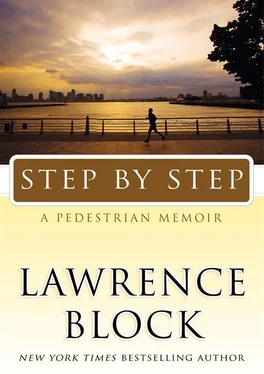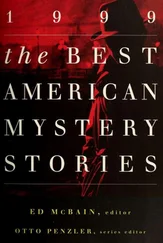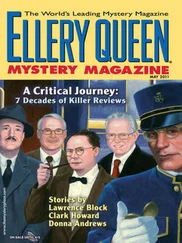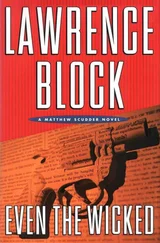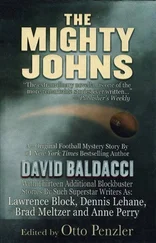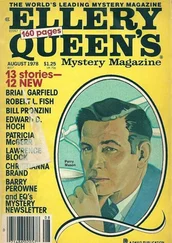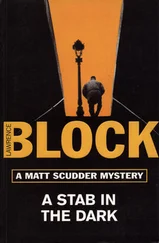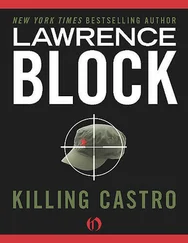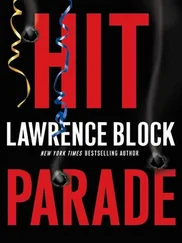Lawrence Block - Step by Step
Здесь есть возможность читать онлайн «Lawrence Block - Step by Step» весь текст электронной книги совершенно бесплатно (целиком полную версию без сокращений). В некоторых случаях можно слушать аудио, скачать через торрент в формате fb2 и присутствует краткое содержание. Год выпуска: 2009, ISBN: 2009, Издательство: William Morrow, Жанр: Биографии и Мемуары, Юмористические книги, на английском языке. Описание произведения, (предисловие) а так же отзывы посетителей доступны на портале библиотеки ЛибКат.
- Название:Step by Step
- Автор:
- Издательство:William Morrow
- Жанр:
- Год:2009
- ISBN:978-0-06-172181-6
- Рейтинг книги:3 / 5. Голосов: 1
-
Избранное:Добавить в избранное
- Отзывы:
-
Ваша оценка:
- 60
- 1
- 2
- 3
- 4
- 5
Step by Step: краткое содержание, описание и аннотация
Предлагаем к чтению аннотацию, описание, краткое содержание или предисловие (зависит от того, что написал сам автор книги «Step by Step»). Если вы не нашли необходимую информацию о книге — напишите в комментариях, мы постараемся отыскать её.
bestselling author comes a touching, insightful, and humorous memoir of an unlikely racewalker and world traveler.
Step by Step — читать онлайн бесплатно полную книгу (весь текст) целиком
Ниже представлен текст книги, разбитый по страницам. Система сохранения места последней прочитанной страницы, позволяет с удобством читать онлайн бесплатно книгу «Step by Step», без необходимости каждый раз заново искать на чём Вы остановились. Поставьте закладку, и сможете в любой момент перейти на страницу, на которой закончили чтение.
Интервал:
Закладка:
And my knee felt fine.
From that point on, went I went out for my daily hour or two, I did so with my knees locked and my arms swinging. A week or two later, I got my first field test as a racewalker in the Mike Hannon Memorial, a twenty-mile race in Central Park. It would be my longest race to date, four and a half miles longer than that 25K, and it was by no means a foregone conclusion that I could complete it. Still, if I dropped out after one or two loops instead of going the distance, I’d still take the same bus home, so why not take a shot at it and honor the memory of Mike Hannon?
(Whoever he was. The club held a few memorial races, and never bothered to tell you anything about the person whose memory we were presumably perpetuating. All these years later, I still remember the name Mike Hannon, and I still don’t have a clue who the guy was.)
I don’t remember too much about the race. I remember it was cold and clear, and I remember the field was small, because not that many people found the prospect of twenty miles in February irresistible, especially with a course of the same old Central Park loops. They didn’t even give out shirts for this one. For the love of Mike.
We made four circuits of a five-mile loop — with various cutoff options, Central Park loops can be four or five or six miles — and somewhere toward the end of the third loop I realized that I was going to be able to finish the race. And I did, and without having to drag myself across the finish line, either. I finished in good form (or as good as my form was going to get) and did so, my records tell me, in 4:09:31. That works out to twelve and a half minutes a mile, and if I maintained the same pace in London I’d complete the marathon in something like five hours and twenty-five minutes.
I could do it.
It would take me more than twice as long as the person who won the thing, but what did that matter? Even if I ran the race, even if I somehow maintained for twenty-six miles my best five-mile pace, I’d still hit the finish line an hour and forty-five minutes behind the winner. When I got to London, I wouldn’t be competing with any of the other participants. I wouldn’t even be competing with myself. I would be battling the distance, and I now had reason to believe I’d be up to it.
I took a bus home from the park, and a few blocks from my apartment I ran into a fellow I knew. I must have looked jubilant, because he commented on my unaccustomed buoyancy. “I have found my sport,” I told him.
10
ihad found my sport. And it was an odd one.
And how is one to discourse upon racewalking without acknowledging its undeniable oddness? It’s a genuine sport with a lengthy history, and has been an Olympic event since the early years of the twentieth century. Those of us who do it with even the slightest degree of seriousness don’t care to have what we do mislabeled as speedwalking or powerwalking . I’ve not been able to determine what either of those terms means, and as far as I can tell they’re catchalls for any form of rapid walking that doesn’t conform to racewalking’s rules.
And they certainly do seem to irritate me. I never correct anyone’s grammatical mistakes (though I’m not above noting them with a full measure of satisfaction) but I can’t seem to avoid calling people to account when they refer to what I’m doing as powerwalking. “Racewalking,” I say, though you’d think I might know better. They’re going to go on calling it what they will, and I’ll go on correcting them, and it makes about as much sense as trying to blow out a lightbulb.
The nomenclature’s simple enough, for all that some people have a hard time with it. It’s the sport itself that’s odd, not so much in appearance (you get used to that) or that it’s an unnatural gait (what, pray tell, is natural about the high hurdles?). The essential oddness lies more in its rules, and a quick look at its evolution will show how they came about, and why they are required, and how they doom the whole business to eternal quirkiness.
The business of walking substantial distances in competition with others has been with us for a long time, and in the nineteenth century, much as it may strain credulity, the six-day walking race was a spectator sport. There were races held from one city to another, and occasional races that spanned the entire country, and I can understand why residents of Hare’s Breath, Nebraska, might gather at the stop sign to see a walker passing through, but a more typical event was held in a stadium, with walkers circling a quarter-mile cinder track for 144 hours. (Keep in mind that this was around the same time that Victorian novelists were required by publishers to turn out three-volume novels; I think it’s fair to say that our forebears were desperate for diversion, and, God bless them, rather easily amused.)
Pedestrianism was a term devised for this sort of activity, and it wasn’t specifically confined to walking. More often than not, these races were go-as-you-please events, and a participant was free to run as much of the time as he chose.
I don’t know how much running the participants did. If television had existed back then, we could look at the tapes and find out — but then if they’d had television, pedestrianism wouldn’t have been able to command much of an audience. The closest thing nowadays to nineteenth-century pedestrianism would be the twenty-four-hour and multiday races (of which more, far more, later). In my experience, a small number of entrants will run all of a twenty-four-hour race, while the greater portion will be runners who mix in a certain amount of walking, less in the early hours, more toward the end. And, of course, there is generally a handful of ultrawalkers, who will walk the whole thing.
I’d guess they walked more and ran less back then, but because there was no distinction in the rules between one gait and another, a contemporary judge would probably deem some of their walking to be running.
And there’s the rub.
Because walking had become not merely a pastime but a competitive sport, the desire arose for events that would pit one walker against another without requiring either the participants or the spectators to invest six days in the business. Shorter races already existed, on a true go-as-you-please basis, but everyone ran them because running was so much faster. So couldn’t you simply bar running and have short events for walkers? Surely everyone could distinguish between walking and running, couldn’t they?
Well, no. It wasn’t that simple. First you had to come to agreement on just what constituted walking, and what crossed the line and could only be called running. I imagine the evolution of this distinction was a fairly complicated business, but I also imagine that most of you reading this are no more interested than I in how racewalking got to be what it is.
So let’s cut to the chase. Walking requires two elements to distinguish it from running. First, the leg must be straight at a certain point in the stride. Second, one foot must be in contact with the ground at all times.
The first requirement, the straight leg, has changed somewhat in the quarter-century since I learned to racewalk. I was taught that the knee of the advancing leg had to be locked when the heel made contact with the ground; now the rules have changed, and the knee has to be locked at the midpoint of the stride, when the body is directly above the foot. (Don’t knock yourself out trying to visualize this. It is, I must say, easier to do all of this than to explain it comprehensibly.)
If you break this rule in a judged racewalk, the judges will call it creeping .
The second rule — one foot in contact with the ground at all times — is much easier to understand and to explain. (And no, it doesn’t have to be the same foot all the time.) If you break this one, they’ll call it lifting .
Читать дальшеИнтервал:
Закладка:
Похожие книги на «Step by Step»
Представляем Вашему вниманию похожие книги на «Step by Step» списком для выбора. Мы отобрали схожую по названию и смыслу литературу в надежде предоставить читателям больше вариантов отыскать новые, интересные, ещё непрочитанные произведения.
Обсуждение, отзывы о книге «Step by Step» и просто собственные мнения читателей. Оставьте ваши комментарии, напишите, что Вы думаете о произведении, его смысле или главных героях. Укажите что конкретно понравилось, а что нет, и почему Вы так считаете.
